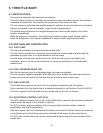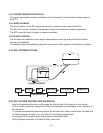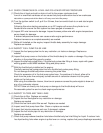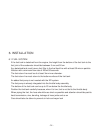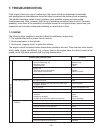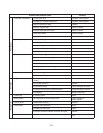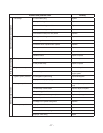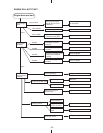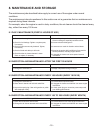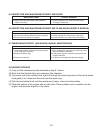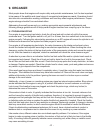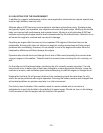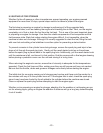
- 21 -
9. ORGANIZE
Most people know that engines will require daily and periodic maintenance, but it’s also important
to be aware of the audible and visual signs of unexpected maintenance needs. Operators should
also take into consideration working conditions and how they affect engine performance. Proper
engine storage shouldn’t be overlooked either.
Addressing the small issues early on, making appropriate environmental adjustments and
following storage guidelines will all help prevent engine troubles from creeping up in the future.
9-1 TROUBLESHOOTING
If an engine is experiencing hard starts, check the oil level and add or drain oil until to the proper
crankcase level. Turn the ignition switch to off, pull 5 or 6 times, then turn switch back to on and start
engine normally. Following this extra starting procedure on an EFI engine will ensure the cylinder is not
flooded and/or ensure the fuel system has been purged of excess air.
If an engine is still experiencing hard starts, the valve clearance on the intake and exhaust valves
should be checked and adjusted according to manufacturer specifications. When checking the valve
clearance, position the piston at the top dead center of the compression stroke and ensure the engine
is cold. After the clearance is adjusted, rotate the crankshaft and check the valve clearance again.
A reduction in power often is an indication that the fuel tank outlet filter and/or cylinder head needs to
be inspected and cleaned. Check the oil level and add or drain the oil until to the proper level. Check
the air filter and fuel tank outlet filter as well. Check the fuel pump pulse line for any restriction, air leaks
or damage. Replace as needed. Check the cylinder head’s valves, seats, ports and guides and remove
any carbon or gum deposits from the components.
If the recoil rope hangs loose and doesn’t completely return, it could be a sign that water has intruded
the engine. This indicates the lubricant may have been washed off. Remove the recoil return and apply
additional lubrication to fix the problem. Ignoring the issue can result in a broken rope or eventual
damage to the recoil starter.
Additionally, a loss of power or a smoking engine may signal an internal engine problem. Blue-colored
smoke indicates that the engine is using oil, a problem that tends to be more common on cold days.
Look to see if the breather hoses are plugged and check the piston rings, which may be bad, to
determine the cause of the smoke.
If the smoke is black in color, it typically indicates that the mixture is too rich. Incorrect mixtures of air
and fuel cause the majority of throttle body problems; therefore, it is important to prevent clogged air
passages and fuel passages that keep air and fuel from flowing freely. Check the throttle body for dirty
or defective parts and clean or replace the entire throttle body assembly if needed. Check the throttle
body fuel feed and return lines for any restriction or damage. Replace as needed. A change in elevation
also may cause black smoke, in which case the engine should be modified to handle the difference.
If basic troubleshooting maintenance techniques fail to work, have a trained mechanic conduct a
leakdown test or compression test to determine the cause for any smoking or power reduction.
Like smoke colors, different noises also can indicate specific problems. For instance, if the engine
begins to make a popping noise or backfire, the mixture of fuel and air is likely too lean in the throttle
body. A knocking noise will generally indicate a worn connecting rod, while a tinny or metallic sound
may mean something is loose.



